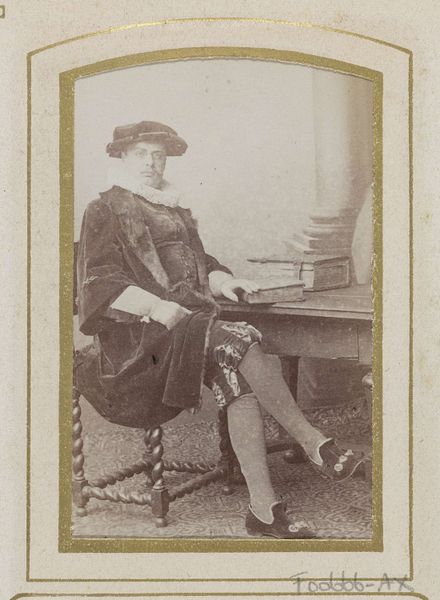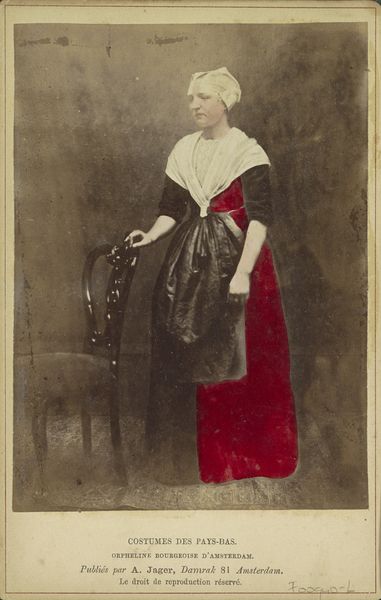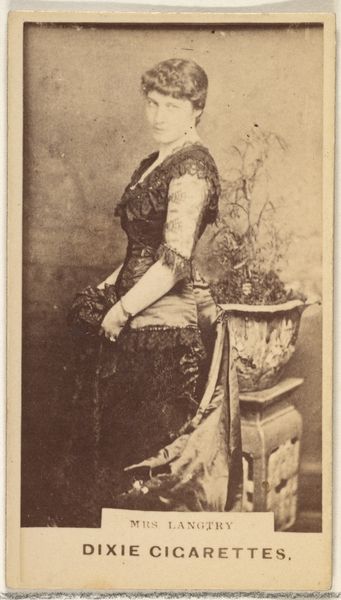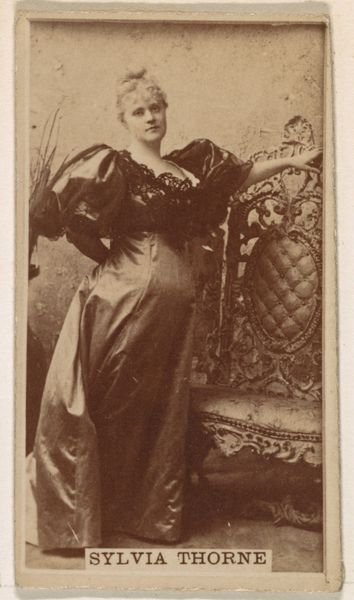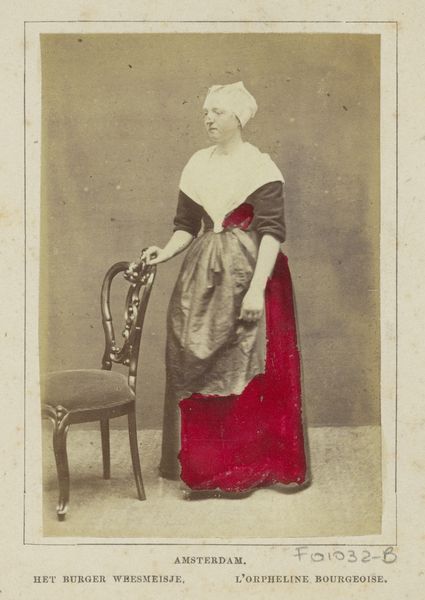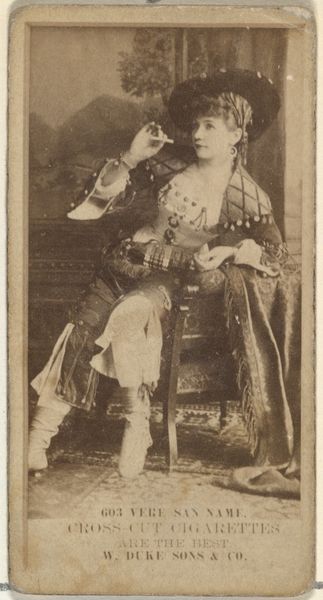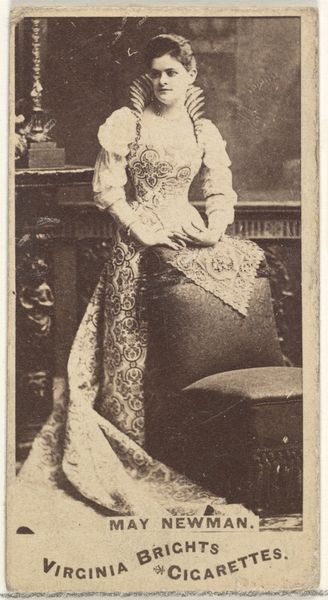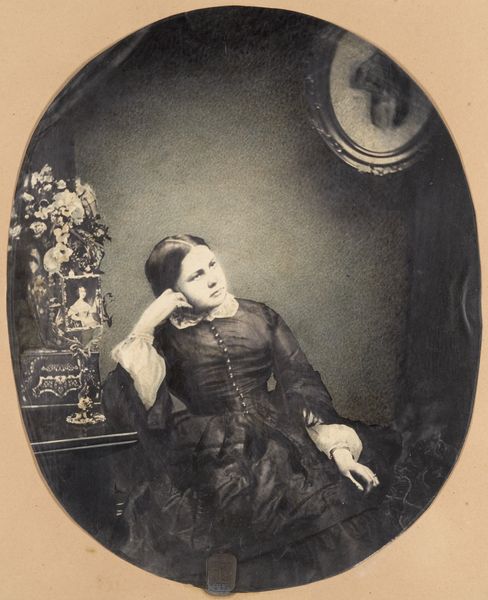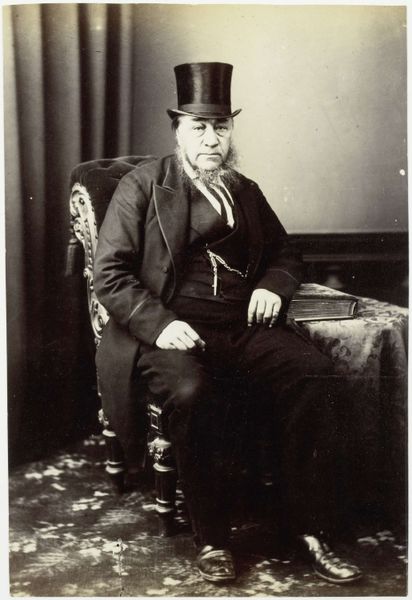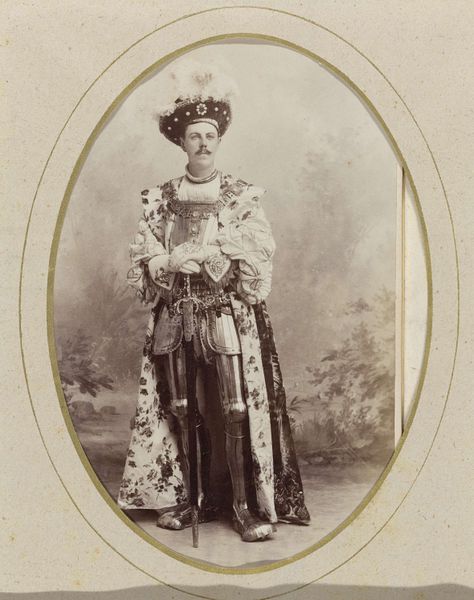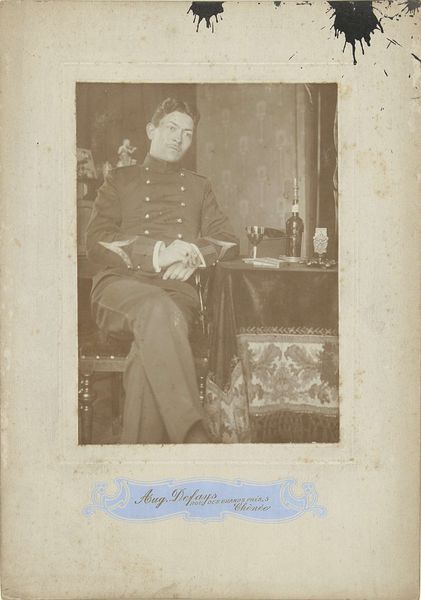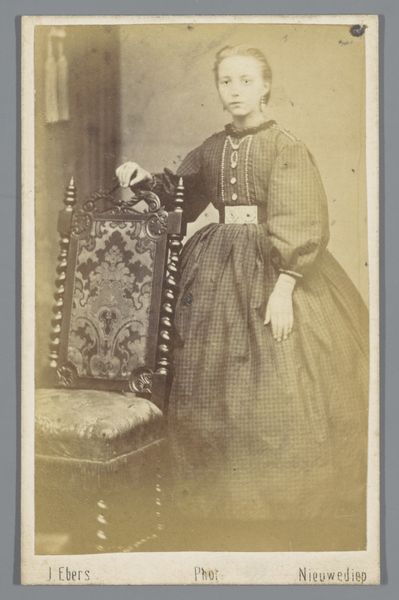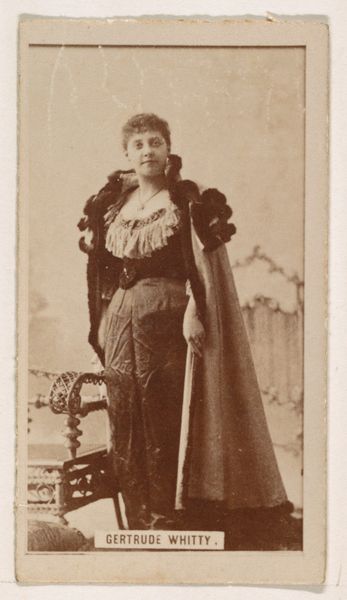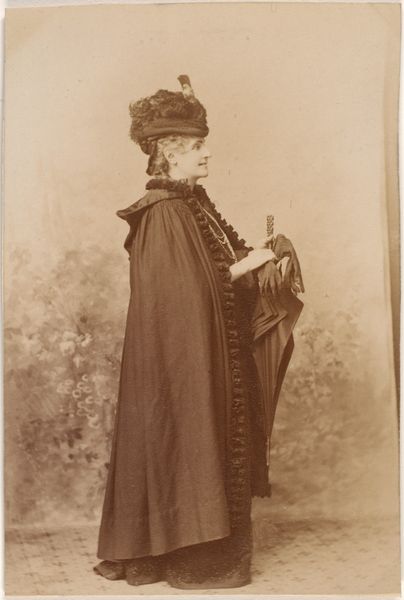
The Undersigned Photographer as He Was Before 1848 1854 - 1856
0:00
0:00
daguerreotype, photography
#
portrait
#
daguerreotype
#
photography
#
19th century
#
men
#
realism
Dimensions: Image: 9 13/16 × 7 15/16 in. (25 × 20.1 cm)
Copyright: Public Domain
Editor: This is "The Undersigned Photographer as He Was Before 1848," a daguerreotype from between 1854 and 1856 by Louis-Pierre-Théophile Dubois de Nehaut. He looks very distinguished, but also somewhat stern, posing in his official robes. I wonder, what stands out to you in this early photograph? Curator: What strikes me is the photographer’s conscious effort to define his public image through this new technology. The meticulous staging - the robes, the legal books, even the framed image on the wall behind him - all contribute to a very deliberate self-presentation. Think about the implications: photography democratized portraiture, making it accessible beyond the elite, yet here's an individual carefully curating how he's seen by posterity. Does that make sense? Editor: Yes, it's like he’s using photography to perform a specific role or project a certain authority. Almost like creating a visual document for future generations. Curator: Precisely. And consider the date - taken after 1848, a year of revolutions. Did Dubois de Nehaut take care to capture an image of stability during times of unrest? Could his portrait represent a larger conservatism among legal professionals following social upheavals? These are the kind of questions about image, role and reality that strike me. Editor: That's a fascinating connection to 1848! It gives a whole new layer of interpretation to the portrait. Curator: Indeed. What started as a seemingly simple photograph opens up a rich exploration of the relationship between image, identity, and political context. Editor: I agree! I had not considered that level of carefully constructed identity and what it communicates about the subject’s cultural moment. Thanks!
Comments
No comments
Be the first to comment and join the conversation on the ultimate creative platform.
